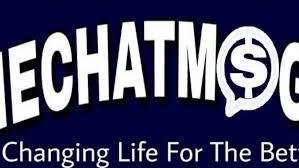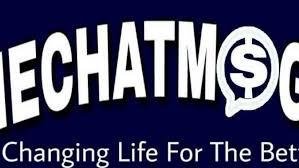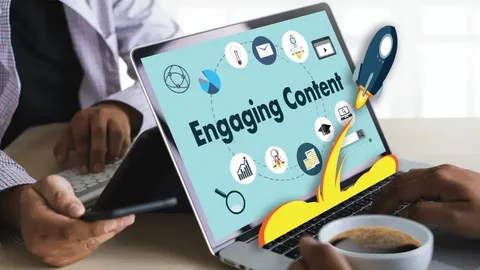In today’s digital world, businesses need engaging content to capture their audience’s attention. One of the best ways to do this is through animation. Animated content is not only eye-catching but also effective in simplifying complex ideas and making marketing messages more memorable. Whether you run a small business or a large corporation, animation can help you connect with your audience in a creative and engaging way.
This article will explore how animation helps businesses create engaging content, its benefits, and how you can start using it in your marketing strategy.
Why Animation Works for Business Marketing
Animation is a powerful marketing tool because it combines visuals, motion, and storytelling to communicate messages effectively. Here’s why animation works so well in business marketing:
1. Grabs Attention Quickly
People have short attention spans, and animated content helps capture their interest immediately. A well-designed animation can engage viewers within seconds, making them more likely to watch or interact with your content.
2. Simplifies Complex Information
Some businesses have products or services that are difficult to explain with text or static images. Animation can break down complicated concepts into simple and easy-to-understand visuals. For example, tech companies use animated explainer videos to demonstrate how their software works.
3. Increases Engagement and Retention
Studies show that people remember visual content better than text. Animation helps businesses communicate their message in a way that is both engaging and memorable. When viewers enjoy content, they are more likely to share it, increasing brand awareness.
4. Works Well Across Different Platforms
Animated content is versatile and can be used on websites, social media, email marketing, and even digital ads. Whether it’s a short GIF, a motion graphic, or a full-length animated video, animation can be adapted for different platforms.
Types of Animation Used in Business Marketing
There are different types of animation that businesses can use depending on their marketing goals. Some of the most common types include:
1. Explainer Videos
Explainer videos use animation to explain a business idea, product, or service in a clear and engaging way. They are often used on websites, product pages, and social media.
2. Motion Graphics
Motion graphics involve animated text, icons, and graphics. They are great for presenting statistics, facts, or brand messages in an engaging way.
3. Whiteboard Animation
This type of animation shows hand-drawn images being created on a whiteboard. It is often used for educational and training purposes, helping businesses explain processes or ideas.
4. 2D and 3D Animation
- 2D Animation: Uses flat images and characters to tell a story. It’s commonly used in marketing and advertising.
- 3D Animation: Creates a more realistic and immersive experience, often used in product demonstrations and gaming.
5. GIFs and Short Clips
Animated GIFs and short videos are highly shareable and work well on social media platforms. They add movement to posts, making them more engaging.
How Animation Helps in Digital Marketing
1. Boosts Social Media Engagement
Animated posts on social media tend to get more likes, shares, and comments compared to static images or text. Platforms like Instagram, TikTok, and Facebook favor video content, making animation a great way to increase visibility.
2. Improves Website User Experience
Animated elements, such as interactive icons or explainer videos, can enhance the user experience on a website. They make content more interactive and keep visitors engaged longer.
3. Enhances Email Marketing
Adding animated visuals or GIFs in emails can make them more appealing and increase click-through rates. People are more likely to engage with an email that has moving elements rather than plain text.
4. Helps with SEO and Google Ranking
Videos and animated content can improve website rankings on search engines. Search engines like Google prioritize engaging content that keeps users on a page longer. This can lead to better SEO performance.
Case Studies: Brands Using Animation Successfully
Several well-known brands have used animation to enhance their marketing efforts. Here are a few examples:
1. Dropbox
Dropbox used a simple animated explainer video to introduce its cloud storage service. The video helped increase sign-ups and played a major role in the company’s early success.
2. McDonald’s
McDonald’s uses animated ads and motion graphics to create fun and engaging marketing campaigns, especially for their social media platforms.
3. HubSpot
HubSpot, a marketing software company, uses animated motion graphics to explain complex marketing strategies in an engaging way.
Is Animation Cost-Effective for Businesses?
Many businesses believe animation is expensive, but that’s not always true. With modern tools, creating animations has become more affordable. Here’s how businesses can use animation without breaking the budget:
1. Free and Low-Cost Animation Tools
There are many AI-powered animation tools available that make animation creation easier. For businesses looking for a cost-effective solution, using the Best AI storyboard tool can help simplify the process. These tools allow users to create high-quality animations without needing advanced design skills.
2. Outsourcing vs. DIY Animation
- Hiring professionals: If a business has the budget, hiring a professional animator can ensure high-quality results.
- DIY animation tools: For smaller budgets, tools like Canva, Vyond, and Powtoon allow businesses to create animations on their own.
3. Reusing and Repurposing Content
One animation can be used across multiple platforms, reducing the need for constant content creation. For example, a single explainer video can be posted on a website, YouTube, and social media.
How to Get Started with Animation for Your Business
If you’re new to animation, here are some simple steps to get started:
Step 1: Define Your Goal
Decide what you want to achieve with animation—whether it’s increasing brand awareness, explaining a product, or driving conversions.
Step 2: Choose the Right Type of Animation
Select the type of animation that best fits your business needs (e.g., explainer video, motion graphics, or GIFs).
Step 3: Use Animation Tools
Start with free or affordable animation tools before investing in professional services.
Step 4: Keep It Simple and Engaging
Your animation should be easy to understand and visually appealing. Avoid making it too complex.
Step 5: Test and Improve
Monitor how your animated content performs and make improvements based on audience engagement.
Conclusion
Animation is a powerful tool that helps businesses create engaging content, improve marketing efforts, and connect with their audience. It captures attention, simplifies complex information, and enhances social media and website engagement. With many affordable animation tools available, businesses of all sizes can start using animation in their marketing strategies.



